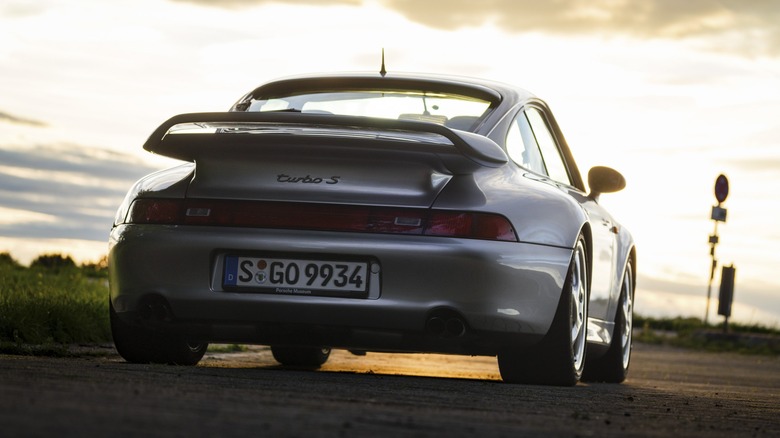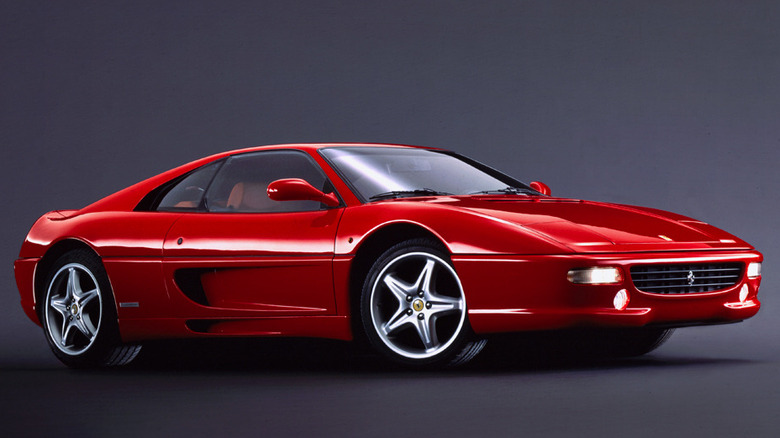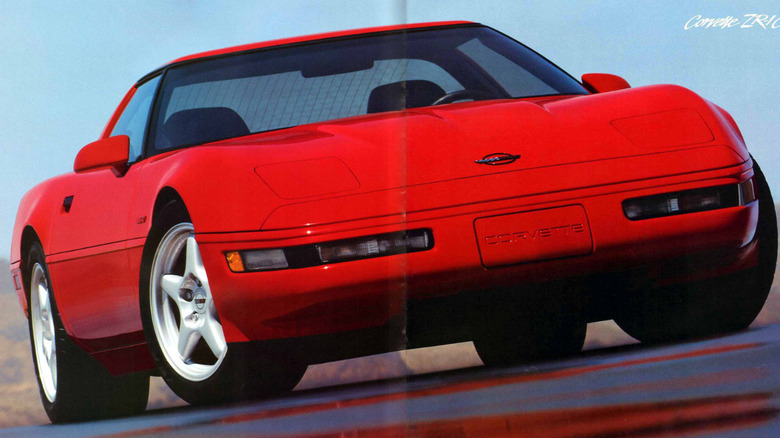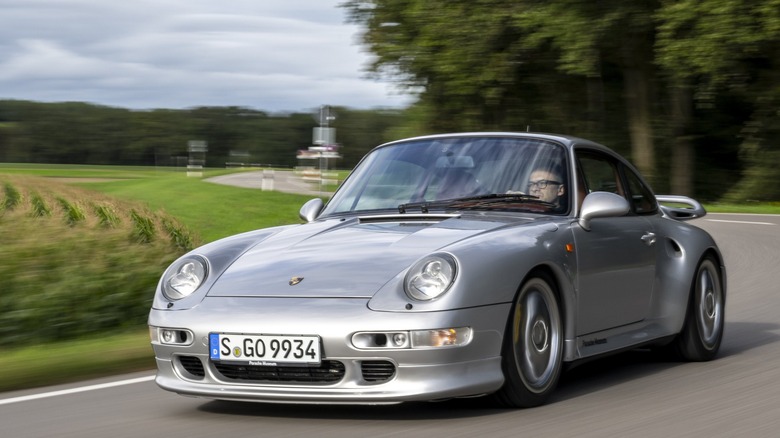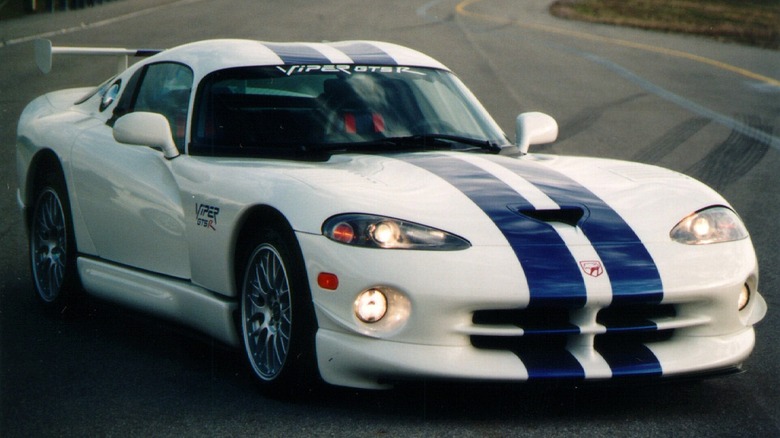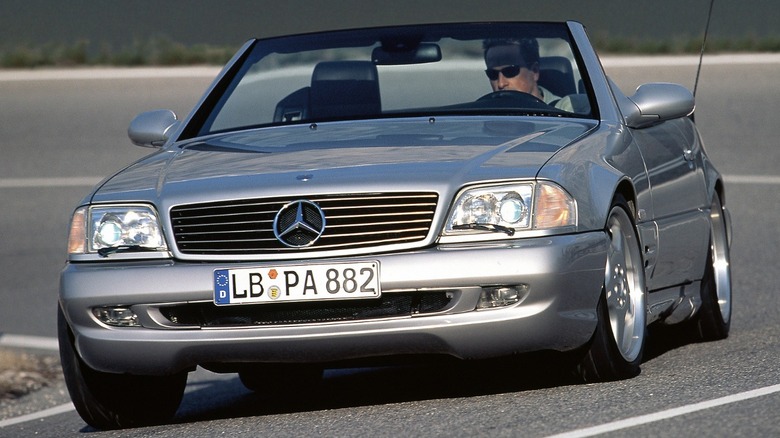5 Of The Highest Horsepower Sports Cars Of The 1990s
The 1990s are sometimes referred to as the greatest decade in automotive history and produced innumerable modern classics, from exotic supercars like the McLaren F1 and Mercedes CLK-GTR, to JDM icons like the Nissan Skyline GT-Rs and fourth-gen Toyota Supra. This was the first decade that saw numerous series-production cars break the 200 mph speed barrier, and arguably the birth of the hypercar with vehicles like the Jaguar XJ220 launching in 1992. And that's before accounting for the levels of nostalgia people have for these machines, thanks to their cultural impact from popular movies and racing-simulation video games with advanced 3D graphics. In this article, we take a look back at these legendary sports cars and determine which among them are the most powerful.
To preface, however, let's first define the term "sports car" in this context. A sports car is different from a supercar or hypercar, a trait most apparent in a vehicle's availability and aesthetics. Typically, hypercars are limited-production and exorbitantly expensive, like the McLaren F1 and Bugatti EB110. Supercars sit at a lower rung, but are still quite flashy and generally unobtainable by most people, such as the Lamborghini Diablo and Ferrari 512 TR. Instead, we'll focus on factory-produced pure sports cars, like grand tourers and saloons. Similarly, no vehicles will feature aftermarket upgrades; a Skyline GT-R can reliably achieve 1,000 horsepower, but it was factory-rated at 276 horsepower. That means no RUFs or Calloways, either, since those use other production cars as a template. And lastly, no repeats: one rank per model only.
Ferrari F355: 380 horsepower
Representing the sole Italian on this list, the Ferrari F355 and its derivatives are among the finest Ferrari sports cars of all time, riding the line between "sports car" and "supercar." With a listed power rating of 380 horsepower, this car actually boasts near-identical output figures with quite a few others, like the 1990 C4 Corvette ZR-1 and Mercedes SL 60 AMG. The reason why this car is classified as a "sports car" on this list is because of its price-point: its original MSRP of $120,080. That's substantial money, but it pales in comparison to the 512 TR's near-enough $200,000 in 1992, or the Ferrari F50's $450,000 price tag.
The 3.5-liter V8-powered Ferrari F355 came in three main configurations: the Berlinetta coupe, GTS targa, and Spider convertible. In addition, Ferrari also produced the F355 Challenge, a racing variant with several alterations including a roll cage, exhaust system, heavy-duty clutch, and safety devices that comply with motorsports regulations. Both new and contemporary reviews praised the F355 as a nimble, fast, and responsive sports car, with glowing compliments stating that this car is everything a Ferrari is supposed to be.
It was produced from 1994 to 1999, witnessing no power increases throughout its run, though it did feature one exceptional advancement. Namely, it was the first Ferrari equipped with a paddle-shift sequential manual transmission, beginning with the 1997 F355 F1 update. Over time, Ferrari stopped selling cars with a manual transmission; nowadays, all current models only sport two pedals instead of three.
Chevrolet Corvette ZR-1 (C4): 405 horsepower
This marks by far the most affordable vehicle on this list, both at the time and today. And that's saying something, considering this car still cost some $68,603 in 1995. But that money bought you one of the finest production Corvettes of the 1990s, serving as the template upon which the faster C5 was built.
In other words, this car's engine was far more powerful than the C4's chassis was originally intended, forcing designers to play catch-up with the rest of the car's chassis and running-gear. For context, just three years prior, the base-model Corvette displaced 240 horsepower, over 50% less power than a ZR-1's initial year. This meant the platform necessitated improvements in braking, aerodynamic, and suspension performance, influencing the more refined but less powerful C5 Corvette's construction and increasing costs substantially over a base-model Corvette.
The C4 Corvette ZR-1 package was originally introduced in 1990, recycling the name from the 1970 ZR-1, a high-performance package for the C3 Corvette Stingray. Much like the C4 ZR-1, this earlier example also featured numerous upgrades, boasting a 370-horsepower 350 LT1 with an M22 "Rock Crusher" transmission and heavy-duty running-gear. The C4 ZR-1 follows this tradition by equipping the platform with the Lotus-engineered LT5, displacing 375 horsepower. This number bumped up to 405 horsepower before production ended, making this vehicle among the most accessible means of owning a '90s car with over 400 horsepower today.
Porsche 911 Turbo S (993): 444 horsepower
If you say the word "sports car" to someone who's not a car person, many people will likely conjure up an image of a Porsche 911. And that's not by accident; after all, the 911's origins date back to 1963, largely based on the most popular car at the time: the air-cooled Volkswagen. And while unquestionably a sports car, an original 911 featured an output of just 148 SAE Net horsepower, 21 horsepower less than a base-model Toyota Corolla today. Naturally, Porsche substantially improved that number over the decades, producing some truly vicious machines like the 930 Turbo, nicknamed the "Widowmaker."
This leads us to the last generation of air-cooled Porsche, the 993, with a production run from 1993 to 1998. Two such examples tie for the most horsepower in a factory-produced air-cooled Porsche: namely, the 911 GT2 homologation special, and the 911 Turbo S (European-spec). The latter makes the list because the 911 GT2 is both rarer and more expensive for the same power output, though that doesn't discount the GT2's reputation as the pinnacle of air-cooled 911s.
By contrast, a 993 Turbo S remains an incredibly fast machine, accelerating to 60 mph in just less than four seconds. A Turbo S distinguishes itself from a standard 911 Turbo with several additions, namely carbon fiber-trimmed instrumentation, shifter, and handbrake; leather-upholstered interior including headliner and steering wheel, and a bespoke aero package with front and rear spoilers. It's a car which, by all accounts, demands tremendous levels of respect to drive fast, so mere mortals may not apply.
Dodge Viper GT2 Championship Edition: 460 horsepower
Better-known as the Dodge Viper GTS-R road car due to its "GTS-R" decals, Dodge produced this special-edition model to commemorate the Viper's numerous motorsports victories, culminating in a championship win in the 1997 FIA GT2 Championship. The Viper enjoyed an outstanding racing career dating back to 1996, beginning an era of crushing dominance at European circuits like Le Mans and the Nürburgring.
A standard Viper is already an exceptionally-powerful sports car, even by today's standards. For example, a 1999 GTS produces 450 horsepower and 490 pound-feet torque. The GT2, however, bumps that number by 10 horsepower and torque, thanks to a revised intake profile and K&N free-flow air filters. Dodge only produced 100 of these special-edition Vipers, making this the second-rarest sports car on this list.
The most distinctive features of the GT2 are its front and rear wing, copied directly from the GTS-R race car, along with the bespoke colors unique to the GT2 line: the white paint with blue stripes, blue interior, American flag, and aluminum BBS rims. This image made it among the most distinctive Vipers ever produced, not that you'd notice for long due to its acceleration, reaching 60 mph in a blistering 3.9 seconds. Interestingly, despite the car's rarity and status as a homologation special, it actually featured a fairly low asking price of just $85,200, making the GT2 the second-best horsepower-per-dollar value car on this list behind the Corvette. However, thanks to its GT-racing aerodynamics, it's likely the fastest vehicle featured here around a racetrack by a considerable margin. The best Viper of arguably every Viper generation; need we say more?
Mercedes-Benz SL 73 AMG: 525 horsepower
There are many heavy-hitter AMG models throughout the 1990s, such as the 300 CE "Hammer" with 381 horsepower, SL 60 AMG with 375 horsepower, and so on. All of these pale in comparison to the SL 73 AMG, with a mighty 525 horsepower at its disposal. Mercedes-Benz accomplished this by fitting the SL 73 with a bored-out V12, going from 6.0 to 7.3 liters, hence the "73" name, in an extremely-limited production run of just 85 cars. Each car cost about $168,000, produced between 1999 and 2001. Despite the additional 65 horsepower over the Viper, the Mercedes was actually a slower-accelerating car, reaching 60 in 4.6 seconds, but that's still perfectly respectable even by today's standards. For context, that's a mere half-second off a 2023 BMW M4.
From an exterior view, an SL 73 AMG resembles any ordinary Mercedes of the era. And for the most part it was just that; the various iterations of SL AMG, such as the SL 55, SL 70, and SL 73, were primarily distinguished by their engine displacement and configuration, either sporting a V8 or V12 depending on the model. The SL 73 represented the most powerful of the bunch, but it was in good company, as the SL 70, for instance, produced 496 horsepower of its own. Unlike the Viper, built to dominate the circuit, the SL 73 was designed to dominate the Autobahn as a fast, comfortable luxury grand-tourer that happened to house a massive V12. Its powerplant was so powerful that it even found its way into future non-AMG supercars, namely the Pagani Zonda C12 S 7.3.
